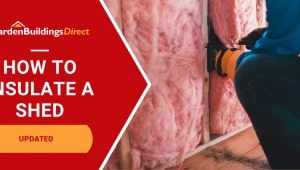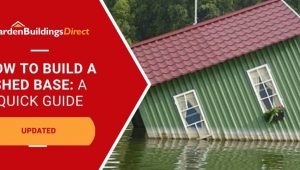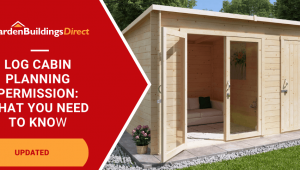Jump to:
Finding the best location to place your new shed in the garden is important. On a practical level, it affects your convenience, but it also impacts the aesthetic appearance of your garden. And that’s not all. Let’s jump into everything you should consider for where to build your shed.
Get the right size shed for your garden
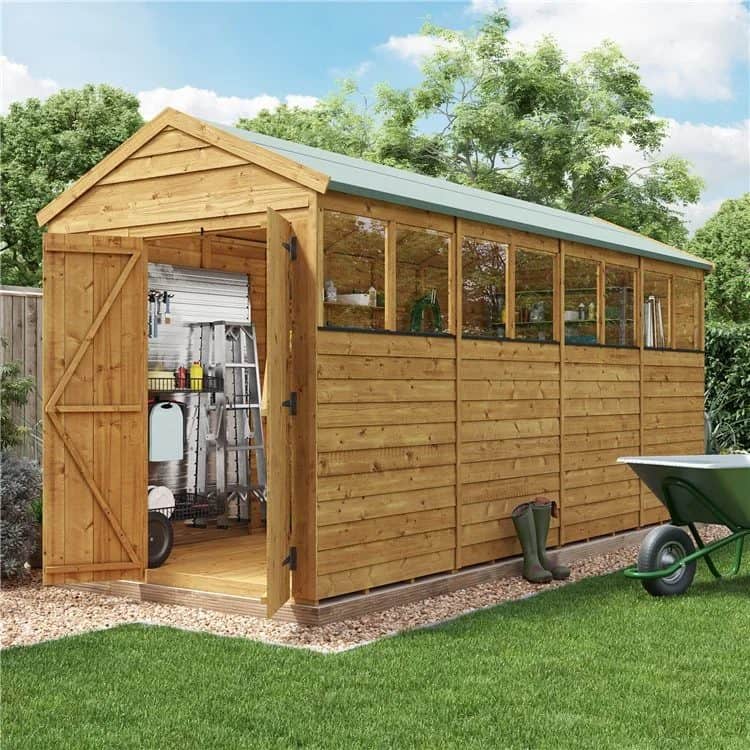
This has one of the biggest effects on the proper location of your outdoor storage. You don’t want your shed to take up too much space. This ensures easy access without any risk of tripping over obstacles on your way to the shed.
Also, you need to leave some extra space around the sides of the structure. This matters mostly for wooden sheds, because timber with no airflow around it will get wet in the rain and then won’t be able to dry properly. Plus, if you can’t easily walk around the shed to apply its yearly wood treatment, then you’ve got a problem. Think carefully before building a wooden shed in a thin alcove or too tightly in the corner.
Proximity to boundaries
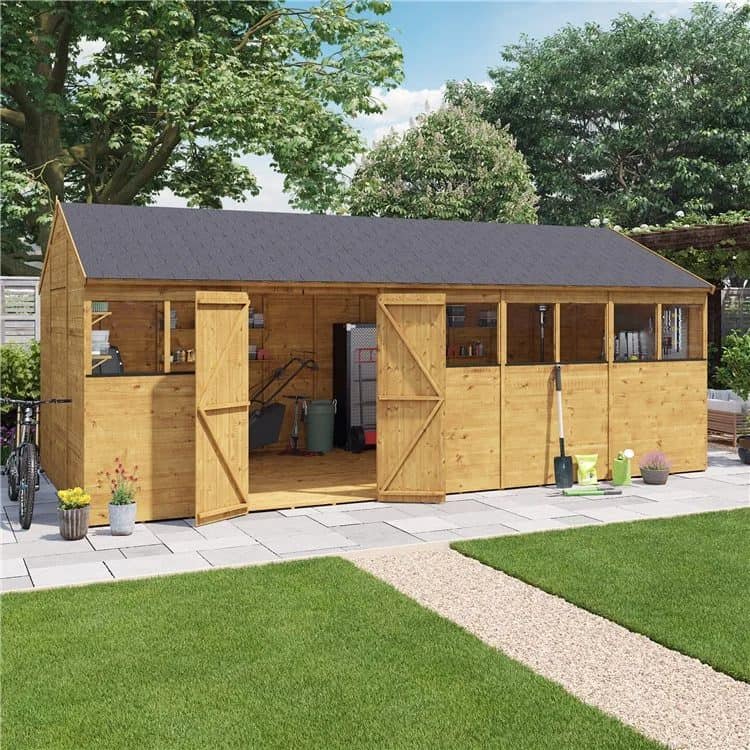
Positioning your shed against fences seems like no trouble, but a few issues may arise. Depending on who’s next door, it could get on your neighbour’s nerves.
There is no specific law preventing you from building a shed near to your neighbour’s fence. However, there are some height limits if it’s closer than 2 metres — too tall, and it will no longer be a ‘permitted development’ and will require planning permission. (All of our sheds for sale are under this height limit.)
For more information, read our ‘How Close Can Your Shed Be to a Fence?’ guide next.
But, let’s say you have a low fence. Would you like it if your neighbour built a fence next to it? You’d always be able to see their shed. This might not be illegal (unless it somehow blocks sunlight, which can give rise to a civil claim), but it can lead to arguments and animosity between neighbours, and no one wants that. So if you must build near a fence, think about how it will affect your neighbour, and maybe speak to them first.
Some properties also have pathways that are shared by neighbours. You should also make sure that your shed doesn’t block this, even if the land is technically yours. And you should never have to step onto your neighbour’s land in order to access the shed.
Position your shed for easy access
Your shed is supposed to make your life easier. So don’t build it somewhere that’s a pain to walk to from your house. If you need to be able to jog on over, put your tools away, and jog back, think how many metres away that is, and whether there are islands of raised planters or garden furniture in your way. Think about footpath access to your shed — can you build the shed next to an existing path, or do you need to lay down a new path to it?
If you’re a gardener, positioning your shed close to your garden beds allows for easy access to tools and supplies. This proximity can streamline your gardening tasks and save time. But if the shed is mostly for storing things, it doesn’t matter as much how far it is from where you usually do things.
Alternatively, you could utilise an outdoor storage box to store toys and small items related to specific activities.
Exposing your shed to the weather
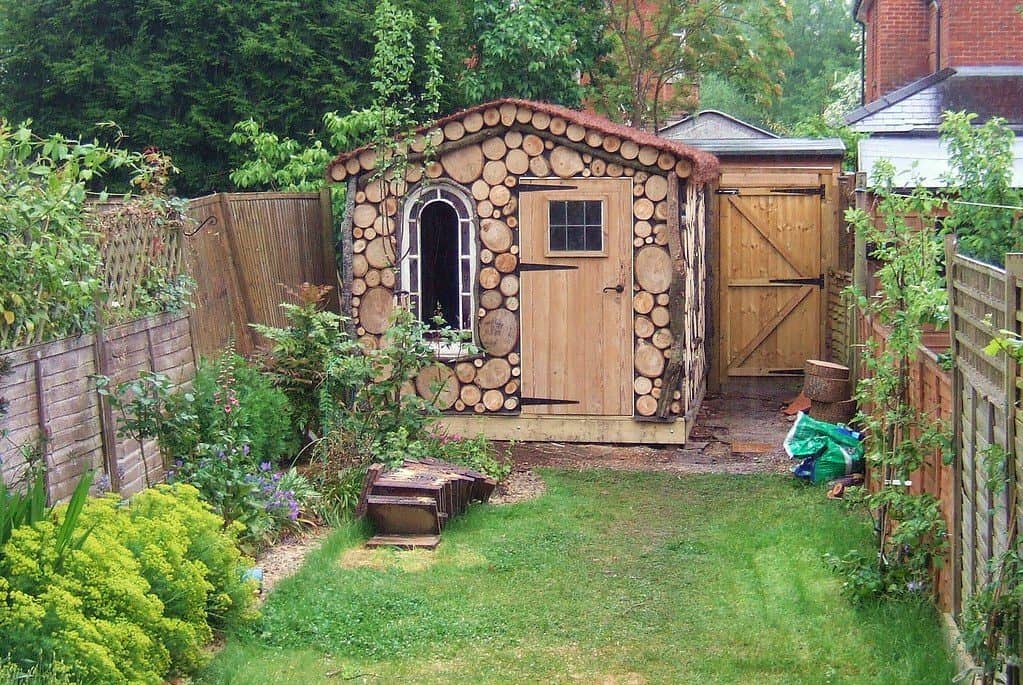
Shield the shed from the unpredictable British weather by not placing it in an exposed area. For instance, if your area experiences a lot of strong wind, there may be parts of your garden where the shed will be more exposed to the full brunt of this.
Installing guttering can also be useful in parts of the country which experience more rainfall (especially in Scotland), for directing water from the roof to go in a particular direction.
Avoid unstable ground or areas water can pool
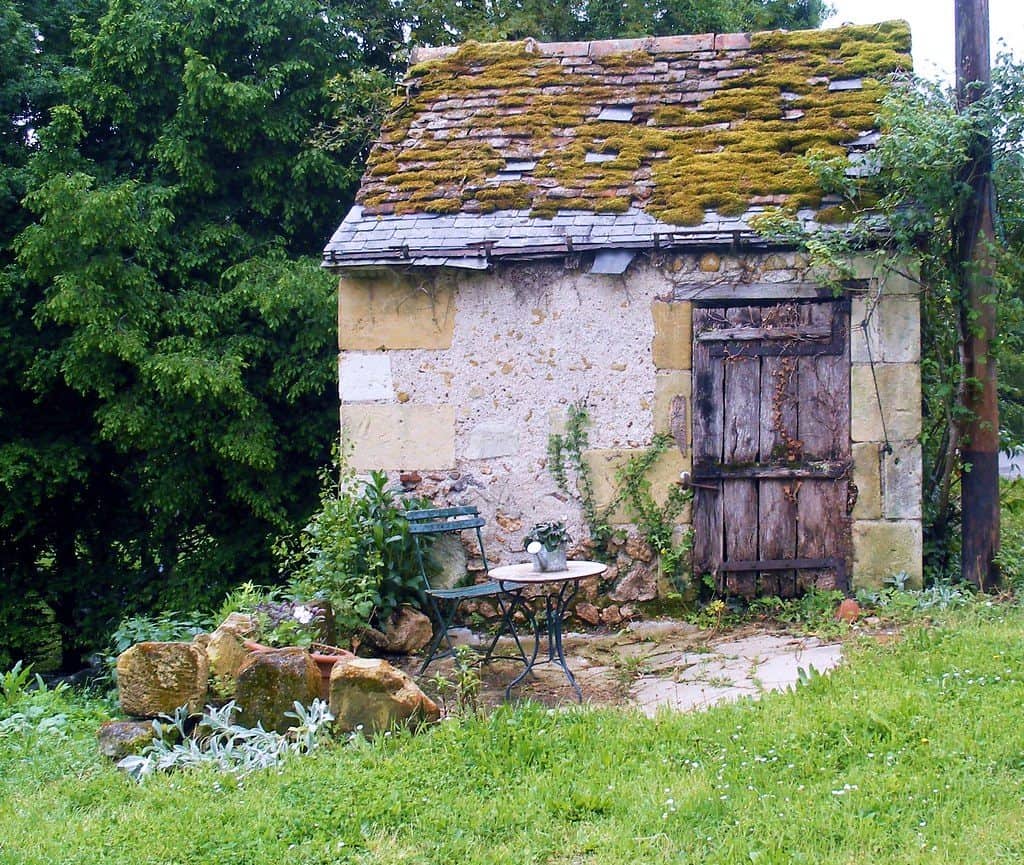
Your garden shed must have a stable base and foundation for stability and longevity. A proper base allows air to circulate under the shed to prevent mould and rot. It also helps support the structure’s weight, preventing it from sinking.
Avoid areas of the garden you know can become puddles. These are a shed’s worst nightmare, because then you can end up with rotting floors or condensation trapped inside.
Tip: Consider following a guide on how to build a shed base for more information.
Avoid putting your shed in the front garden
Building a shed in the front garden requires planning permission. If that’s not an issue and you’re confident you can obtain the required permissions, that’s great.
You should also consider whether the front garden could also make your shed more of a target for thieves, especially if they can see you getting your bike out of it.
Round-up
Before ordering a shed, dedicate time to determine the best position on your property. With this, you can avoid the hassle and make the best use of your new structure. Get it wrong, and your outbuilding may be more of a headache than a convenience.
Make the most informed decision with our garden shed buying guide.
If you haven’t invested in one, explore Garden Buildings Direct for options. Up next on your reading list: How Many Sheds Can I Have in My Garden?
You may contact us or call us at 01909 768840 if you have any questions.
Garden Sheds For Sale